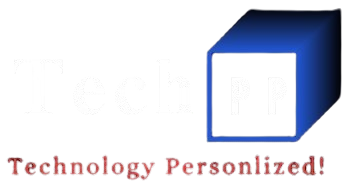An accurate cost estimate is considered to be one of the most crucial components of a Construction Projects. Without a precise budgeting process, the project could face cost overruns, shortages of resources, and the risk of financial instability. Companies in the construction industry must employ top practices and procedures for accurate cost forecasts to help them maintain the profitability of their projects and meet deadlines.
An expert Construction Estimator is a key player during this process. They can leverage knowledge of the industry, data from the past, and modern technologies to produce accurate budgets. In this post we’ll look at the top practices and techniques to help professionals in construction ensure accurate cost estimation for their construction projects.
The Importance of Accurate Cost Estimation
A properly planned construction estimate offers the framework for planning budgets, procuring materials, and implementing project implementation. Incorrect estimations can lead to delays, financial issues, and legal issues. A few of the benefits of a thorough cost estimation are:
- Better financial planning: It helps stakeholders efficiently manage budgets.
- Improvements to Bidding Procedure: This ensures that bids are competitive and successful.
- Reducing the Risk of Cost Overruns: It prevents delays and unexpected expenditures.
- Efficiency in Resource Management: Ensures efficient utilization of materials, labor, and equipment.
To reap the benefits of these the construction companies need to follow established best practices in the industry.
Best Practices in Construction Costing
Use of Historical Data and Market Trends
One of the best methods to increase the accuracy of cost estimation is through studying historical data from projects. Examining projects that have similar size and complexity could give insight into the costs of materials in addition to labor as well as the risk of a project. In addition, being informed about changes in the market along with inflation rates, as well as the fluctuations in the supply chain, can help make accurate cost forecasts.
Implementing Advanced Estimation Software
Methods for cost estimation that have been used in the past, like spreadsheets, as well as manually calculated calculations, are susceptible to error by humans. Modern software for estimation automatizes calculations, eliminates errors, and offers real-time cost analysis. Software such as ProEst, CostX, and PlanSwift enables estimators to develop comprehensive cost breakdowns based upon suppliers’ databases and benchmarks in the field.
Detailed Quantity Takeoff (QTO)
Quantity takeoff is the method that measures the quantity of resources and materials needed for the project. This is essential in stopping material shortages or the purchase of too much. A clear QTO makes sure that estimators take into account each aspect of construction, from steel and concrete to plumbing and wiring parts.
Risk-Based Cost Estimation
Construction projects are often faced with unexpected obstacles like the weather, labor shortages, and changes to regulations. Risk-based estimation is the process of identifying possible risks and including contingency expenses in the budget. This method of planning helps with managing unexpected costs while not increasing the cost of the project.
Regular Cost Updates and Adjustments
Cost estimation isn’t an event-driven process. It demands regular updates in line with developments in the project and on the market. The prices of both labor and materials vary frequently, and failure to adapt estimates according to changes can result in financial losses. Monitoring and updating the cost regularly make sure that the project is financially sustainable.
Collaboration Between Estimators and Designers
The coordination of efforts with cost estimators as well as design experts, for instance, the drafter in CAD, can result in better estimations. Working closely with designers and engineers, estimators can pinpoint feasible design options that are cost-effective and improve the use of materials without jeopardizing the structural integrity. Collaboration with designers and engineers ensures that projects stay within the budget right from the initial stage of planning.
Methodologies for Accurate Construction Costing
Unit Cost Estimation
The method is based on calculating the cost by calculating individual units like the square feet of floor or the weight of a steel ton. Through referencing standard cost databases and rates from suppliers, estimates can give accurate and quick cost estimates.
Bottom-Up Estimation
Bottom-up estimation is among the most precise and detailed techniques. It is based on breaking down every element of the project and estimating the expenses for the individual components, after which these estimates are used to calculate the overall cost. This technique requires extensive information collection yet provides extremely accurate results. Collaboration among estimators and designers, like drafters for CAD and CAD Drafter, also improves the efficiency of costs
Top-Down Estimation
Contrary to the bottom-up estimate, the top-down method is based on a project’s high-level budget and allocates the costs across different parts and phases. Although it is effective in the beginning, it’s not quite as accurate as the bottom-up method and requires greater detail when the project develops.
Three-Point Estimation
This method allows for the creation of three distinct cost estimates:
- Best Estimate: The model assumes that the optimal scenario is the one with the least risk.
- The Most Likely Estimate: This is the most accurate estimation of costs.
- Pessimistic Assessment: Accounts for worst-case scenarios as well as potential dangers.
When combining these three estimations, companies in the construction industry are able to create a well-balanced and risk-adjusted budget for projects.
Parametric Estimation
Parametric estimation employs mathematical models, as well as historical data, to estimate costs based on the characteristics of the project. As an example, if previous studies show that commercial structures cost $250/square foot, a new 20,000-square-foot construction would be valued at $5 million. This is a useful method in cost estimations at an early stage and feasibility study.
The Role of Professional Estimating Services
Numerous construction companies opt to outsource their estimation of costs to professional estimation services for construction. The services employ experts from the industry with the latest software as well as live data in real time to provide precise cost estimations. Benefits that outsourcing estimates offer are:
- Access to Expertise of Specialized: Professional estimators have an extensive understanding of material cost, labor, as well as the regulations of their industry.
- Time and Cost Savings: Outsourcing reduces the work of in-house teams, which allows contractors to focus on the project’s execution.
- Advanced Technology Use: Estimating companies use cutting-edge techniques like AI-powered cost predictions along with cloud-based platforms for collaboration.
With the help of specialized construction estimating solutions, contractors are able to increase the accuracy of their estimates, increase their bid competitiveness, and assure financial viability.
Conclusion
Achieving accurate costing is the basis of the success of construction projects. When you adhere to the most effective practices, including utilizing data from the past by using advanced software for estimation and including risk-based costing into their construction plans, companies are able to improve their financial planning and managing resources. Techniques such as bottom-up estimation, three-point estimation, and parametric analysis are structured ways for exact budgeting.
Furthermore, outsourcing Construction Estimating Services provides access to expert information and the latest technology and improves the overall performance of projects.
If they adopt these top methods and practices, the construction industry can cut down on costs, improve utilization of resources, and keep the profitability of their business.


